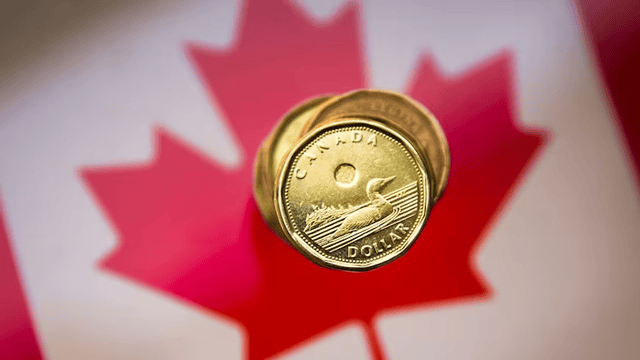
A business news ticker displaying the TSX is visible in Toronto’s Financial District on Monday, March 9, 2020. (THE CANADIAN PRESS/Cole Burston)
Canada’s main stock market suffered a setback on Thursday, with the S&P/TSX composite index dropping over 100 points as technology and industrial stocks declined. U.S. markets followed suit, with the Dow Jones, S&P 500, and Nasdaq all ending lower.
The Toronto Stock Exchange’s benchmark index fell 112.08 points, closing at 25,514.08. Meanwhile, in New York, the Dow Jones Industrial Average tumbled 450.94 points, a one percent drop, closing at 44,176.65. The S&P 500 declined by 26.63 points to 6,117.52, while the Nasdaq composite lost 93.89 points, settling at 19,962.36.
Walmart’s Forecast Sends Ripples Through Markets
A major factor behind the market downturn was Walmart’s earnings report. While the retail giant posted strong sales and profits, its outlook for 2025 disappointed investors. Concerns over inflation and potential tariffs weighed on projections, causing Walmart’s stock to drop 6.5%.
Other retailers followed suit. Costco declined 2.6%, Target lost 2%, and Amazon slipped 1.7%. Investors are increasingly worried that rising costs and trade uncertainties will make consumers more cautious with their spending.
Hadiza Djataou, vice president and portfolio manager of global bonds at Mackenzie Investments, noted that looming tariffs on Canada and Mexico are contributing to economic uncertainty. “With targeted tariffs and broader trade policies in flux, consumer spending habits could take a hit,” she said.
Interest Rate Uncertainty Adds to Market Jitters
Despite largely positive earnings reports in both Canada and the U.S., inflation remains a key concern. Recent inflation data exceeded expectations, raising doubts about potential interest rate cuts. Tariffs, which are widely believed to drive prices higher, add another layer of uncertainty.
While expectations for U.S. Federal Reserve rate cuts have cooled, Canada is still on track for potential reductions, as higher interest rates have hit the economy harder. Meanwhile, the Canadian dollar showed signs of recovery, trading at 70.48 cents US, up from 70.31 cents US the previous day.
Commodities See Mixed Results
Oil and gold saw slight gains, while natural gas declined. Crude oil prices rose by 38 cents, reaching US$72.48 per barrel, while gold climbed US$20 to US$2,956.10 per ounce. Meanwhile, natural gas prices dipped by 13 cents to US$4.15 per mmBTU.
What’s Next for Markets?
With key tariff deadlines approaching and possible policy shifts from the new U.S. administration, investors are bracing for more volatility. Trade policies, regulatory changes, and consumer confidence will play crucial roles in shaping the market’s next moves.















